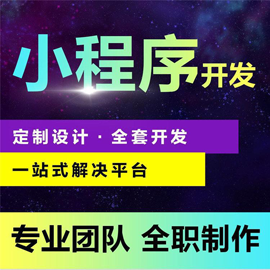怎么使用ggplot2實現玫瑰氣泡圖
這篇文章主要介紹“怎么使用ggplot2實現玫瑰氣泡圖”的相關知識,小編通過實際案例向大家展示操作過程,操作方法簡單快捷,實用性強,希望這篇“怎么使用ggplot2實現玫瑰氣泡圖”文章能幫助大家解決問題。
目前成都創新互聯公司已為上1000+的企業提供了網站建設、域名、網絡空間、網站改版維護、企業網站設計、阜新網站維護等服務,公司將堅持客戶導向、應用為本的策略,正道將秉承"和諧、參與、激情"的文化,與客戶和合作伙伴齊心協力一起成長,共同發展。
圖表整體難度中等,使用ggplot2來寫代碼,主要考察關于極坐標轉換與應用。(ggplot2系統中,兩個較為高階的用法分別為:極坐標系、地理空間的多邊形填充)。
#加載包:
library("ggplot2")
library("tidyr")
library("ggthemes")
library("dplyr")
library("Cairo")
library("showtext")
#載入字體:
font.add("myfontl","msyhl.ttc")
font.add("myfont","msyh.ttc")
font.add("myfzhzh","方正正粗黑簡體.TTF")
#鎖定文件臨時目錄:
setwd("D:/R/File")
#導入數據
circle_bubble<-read.csv("circle_bubble.csv",stringsAsFactors = FALSE,check.names = FALSE)
仔細觀察該圖,你會發現,玫瑰圖內側并非底邊對齊,而是靠上下中心對齊,要想做到這種效果,必須將一個 細分維度轉化為負值(柱形圖堆積時會自動將負值堆積在負坐標軸上)。
circle_bubble$Government<--circle_bubble$Government
level<-circle_bubble[,"State"]
circle_bubble$State<-factor(circle_bubble$State,levels=level,ordered=TRUE)

篩選出制作堆積條形圖的數據源:
circle_data<-circle_bubble %>% select(State,Government,Family,Youself) %>% gather(Class,Value,-State)
circle_data$Class<-factor(circle_data$Class,levels=c("Government","Youself","Family"),ordered=TRUE)

#構造三個序列的氣泡圖數據:
circle_point<-circle_bubble[,c("State","General","Very","Raito")]
circle_point_data<-gather(circle_point,Class,Value,-State)
circle_point_data$Class<-factor(circle_point_data$Class,levels=c("General","Very","Raito"),order=TRUE)

#構造氣泡圖模擬Y軸:
circle_point_data <- within(circle_point_data,{
mood_y <- NA
mood_y[Class=="General"]<--150
mood_y[Class=="Very"]<--100
mood_y[Class=="Raito"]<-140})
#構造模擬氣泡大小
circle_point_data$Value_y<-ifelse(circle_point_data$Class=="Raito",circle_point_data$Value,0.3*circle_point_data$Value)
(這里沒有使用氣泡圖對應真實值作為氣泡大小,而是將除Raito系列之外的兩個序列真實值縮小了70%,這么做的目的是為了整體的氣泡大小比例顯示更為勻稱和諧,因為Ratio序列是單值序列,其與自身的100%單位標度比較,剩余兩個序列相互比較)。
#構造模擬標簽位置
circle_data <- within(circle_data,{
label_y <- NA
label_y[Class=="Government"]<-circle_bubble$Government/2
label_y[Class=="Family"]<-circle_bubble$Family/2
label_y[Class=="Youself"]<-circle_bubble$Family+circle_bubble$Youself-circle_bubble$Youself/2})
#極坐標化前的柱形圖:
ggplot()+
geom_linerange(data=circle_bubble,aes(x=State,ymin=-150,ymax=140),size=.25,color="#D8E5F2",alpha=0.8)+
geom_col(data=circle_data,aes(x=State,y=Value,fill=Class),width=1,colour="white",size=.25)

###極坐標化前的柱形圖和氣泡圖
ggplot()+
geom_linerange(data=circle_bubble,aes(x=State,ymin=-150,ymax=140),size=.25,color="#D8E5F2",alpha=0.8)+
geom_col(data=circle_data,aes(x=State,y=Value,fill=Class),width=1,colour="white",size=.25)+
geom_point(data=circle_bubble,aes(State,y=140),size=40,colour="#FEFCD3",alpha=.8)+
geom_point(data=circle_point_data,aes(State,y=mood_y,size=Value_y,colour=Class))+
geom_text(data=circle_data,aes(x=State,y=label_y,group=Class,label=abs(Value)),family="myfont",colour="white",size=5)+
geom_text(data=filter(circle_point_data,mood_y==-150),aes(x=State,y=mood_y,label=Value),family="myfontl",colour="#AA1A66",size=4)+
geom_text(data=filter(circle_point_data,mood_y==-100),aes(x=State,y=mood_y,label=Value),family="myfontl",colour="#A31067",size=4)+
geom_text(data=filter(circle_point_data,mood_y==140),aes(x=State,y=mood_y,label=Value),family="myfontl",colour="#F29E4A",size=5)

#極坐標化后的柱形圖和氣泡圖(完整標簽版)
ggplot()+
geom_linerange(data=circle_bubble,aes(x=State,ymin=-150,ymax=140),size=.25,color="#D8E5F2",alpha=0.8)+
geom_col(data=circle_data,aes(x=State,y=Value,fill=Class),width=1,colour="white",size=.25)+
geom_point(data=circle_bubble,aes(State,y=140),size=40,colour="#FEFCD3",alpha=.8)+
geom_point(data=circle_point_data,aes(State,y=mood_y,size=Value_y,colour=Class))+
geom_text(data=circle_data,aes(x=State,y=label_y,group=Class,label=abs(Value)),family="myfont",colour="white",size=5)+
geom_text(data=filter(circle_point_data,mood_y==-150),aes(x=State,y=mood_y,label=Value),family="myfontl",colour="#AA1A66",size=4)+
geom_text(data=filter(circle_point_data,mood_y==-100),aes(x=State,y=mood_y,label=Value),family="myfontl",colour="#A31067",size=4)+
geom_text(data=filter(circle_point_data,mood_y==140),aes(x=State,y=mood_y,label=Value),family="myfontl",colour="#F29E4A",size=5)+
scale_fill_manual(values=c("#FA844F","#BDCCD4","#00C4B5"))+
scale_colour_manual(values=c("#FAC0A1","#F35C57","#FBEB1B"))+
labs(title="各國人民\n對于養老的態度")+
scale_size_area(max_size=34.8)+
coord_polar()

#最終成品圖:
CairoPNG(file="circle_bubble.png",width=1000,height=1000)
showtext.begin()
ggplot()+
geom_linerange(data=circle_bubble,aes(x=State,ymin=-150,ymax=140),size=.25,color="#D8E5F2",alpha=0.8)+
geom_col(data=circle_data,aes(x=State,y=Value,fill=Class),width=1,colour="white",size=.25)+
geom_point(data=circle_bubble,aes(State,y=140),size=40,colour="#FEFCD3",alpha=.8)+
geom_point(data=circle_point_data,aes(State,y=mood_y,size=Value_y,colour=Class))+
geom_text(data=circle_data,aes(x=State,y=label_y,group=Class,label=abs(Value)),family="myfont",colour="white",size=5)+
geom_text(data=filter(circle_point_data,mood_y==-150),aes(x=State,y=mood_y,label=Value),family="myfontl",colour="#AA1A66",size=4)+
geom_text(data=filter(circle_point_data,mood_y==-100),aes(x=State,y=mood_y,label=Value),family="myfontl",colour="#A31067",size=4)+
geom_text(data=filter(circle_point_data,mood_y==140),aes(x=State,y=mood_y,label=Value),family="myfontl",colour="#F29E4A",size=5)+
scale_fill_manual(values=c("#FA844F","#BDCCD4","#00C4B5"))+
scale_colour_manual(values=c("#FAC0A1","#F35C57","#FBEB1B"))+
labs(title="各國人民\n對于養老的態度")+
scale_size_area(max_size=34.8)+
coord_polar()+
ylim(-250,150)+
guides(colour=FALSE,size=FALSE,fill=FALSE)+
theme_map() %+replace%theme(plot.title=element_text(family="myfzhzh",size=50,hjust=0,lineheight=1.2))
showtext.end()
dev.off()

關于“怎么使用ggplot2實現玫瑰氣泡圖”的內容就介紹到這里了,感謝大家的閱讀。如果想了解更多行業相關的知識,可以關注創新互聯行業資訊頻道,小編每天都會為大家更新不同的知識點。
文章名稱:怎么使用ggplot2實現玫瑰氣泡圖
本文來源:http://m.newbst.com/article24/gohdje.html
成都網站建設公司_創新互聯,為您提供網站設計、外貿建站、自適應網站、網站導航、網站改版、移動網站建設
聲明:本網站發布的內容(圖片、視頻和文字)以用戶投稿、用戶轉載內容為主,如果涉及侵權請盡快告知,我們將會在第一時間刪除。文章觀點不代表本網站立場,如需處理請聯系客服。電話:028-86922220;郵箱:631063699@qq.com。內容未經允許不得轉載,或轉載時需注明來源: 創新互聯

- 公眾平臺面向認證的媒體類型公眾號公測原創聲明功能 2016-09-04
- 微信公眾號運營的七大技巧你了解嗎? 2014-05-29
- 企業網站建設,響應式網站制作,微信公眾號網站搭建 2022-05-15
- 微信公眾號添加不了超鏈接的原因是什么? 2014-05-23
- 企業微信公眾號成段子手,是娛樂化還是營銷 2022-12-01
- 如何在微信公眾號關聯小程序的呢 2021-12-20
- 微信公眾號如何在短期內力挽狂瀾,吸粉破萬? 2021-06-08
- 如何優化微信公眾號和文章? 2015-07-28
- 微信公眾號營銷水分虛高 那么談談水分營銷的破壞力 2016-02-24
- 微信公眾號叕改版了,這里有最全改版信息匯總,還有微信官方改版解答! 2022-05-21
- 微信公眾號的淘寶客如何科學營銷? 2015-09-06
- 我如果做微信公眾號平臺營銷是否也可以賺到錢呢? 2022-08-21